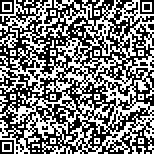| 引用本文: | 罗国良,朱小翠,潘红烨,王芳芳,范杰,姚建标.基于斑马鱼模型的中药来源化合物血管抑制活性筛选[J].中国现代应用药学,2022,39(17):2186-2191. |
| LUO Guoliang,ZHU Xiaocui,PAN Hongye,WANG Fangfang,FAN Jie,YAO Jianbiao.Screening of Angiogenic Inhibitory Activity of Herbal-derived Compounds Based on Zebrafish Model[J].Chin J Mod Appl Pharm(中国现代应用药学),2022,39(17):2186-2191. |
|
| 本文已被:浏览 1134次 下载 701次 |

码上扫一扫! |
|
|
| 基于斑马鱼模型的中药来源化合物血管抑制活性筛选 |
|
罗国良1, 朱小翠1, 潘红烨1,2, 王芳芳1, 范杰1, 姚建标1,2
|
|
1.浙江康恩贝制药股份有限公司, 浙江省中药制药技术重点实验室, 杭州 310052;2.浙江大学药学院, 杭州 310058
|
|
| 摘要: |
| 目的 利用斑马鱼高通量模型,对10种中药来源化合物进行筛选。方法 选取受精后转基因血管荧光Fli-1品系斑马鱼对10个中药来源的化合物进行筛选,用不同的药物浓度分别作用于斑马鱼,观察对斑马鱼体血管的影响。以斑马鱼肠下血管面积为主要指标,斑马鱼肠下血管出芽数为次要指标进行定量分析,考察各化合物对斑马鱼血管生成的抑制作用。结果 木犀草素(87.34 μmol·L–1)、洋川芎内酯A(52.02 μmol·L–1)、盐酸小檗碱(537.91 μmol·L–1)、和厚朴酚(9.39 μmol·L–1)、齐墩果酸(10.95 μmol·L–1)组斑马鱼肠下血管面积与正常对照组相比肠下血管面积显著减少(P<0.01或P<0.001);木犀草素、洋川芎内酯A、盐酸小檗碱、齐墩果酸、和厚朴酚对肠下血管面积的抑制作用分别为12%,17%,18%,15%,24%;各化合物与正常对照组相比斑马鱼肠下血管出芽数无显著性差异;阳性对照组(索拉非尼5 μmol·L–1)斑马鱼肠下血管面积与正常对照组比较显著性减少(P<0.05),其对血管新生的抑制作用为22%,肠下血管出芽数与正常对照组相比显著性减少(P<0.05)。结论 木犀草素、洋川芎内酯A、盐酸小檗碱、齐墩果酸、和厚朴酚具有抑制血管新生作用。 |
| 关键词: 斑马鱼 中药来源化合物 血管抑制 |
| DOI:10.13748/j.cnki.issn1007-7693.2022.17.003 |
| 分类号:R965.1 |
| 基金项目:“重大新药创制”国家科技重大专项(2017ZX09304003) |
|
| Screening of Angiogenic Inhibitory Activity of Herbal-derived Compounds Based on Zebrafish Model |
|
LUO Guoliang1, ZHU Xiaocui1, PAN Hongye1,2, WANG Fangfang1, FAN Jie1, YAO Jianbiao1,2
|
|
1.Zhejiang CONBA Pharmaceutical Co., Ltd., Zhejiang Provincial Key Laboratory of Traditional Chinese Medicine Pharmaceutical Technology, Hangzhou 310052, China;2.College of Pharmaceutical Sciences, Zhejiang University, Hangzhou 310058, China
|
| Abstract: |
| OBJECTIVE To screen 10 herbal-derived compounds by using zebrafish high-throughput model. METHODS Selection of transgenic vascular fluorescent Fli-1 zebrafish after fertilization for screening of 10 herbal-derived compounds, and the effects on the body vasculature of zebrafish were observed by applying different drug concentrations to zebrafish. The inhibition effects of the compounds on the angiogenesis of zebrafish were quantified by using the area of subintestinal vessels as the main index and the number of subintestinal vessels sprouting as the secondary index. RESULTS The subintestinal vascular area of zebrafish was significantly reduced in the groups of lignocaine(87.34 μmol·L-1), senkyunolide A(52.02 μmol·L-1), berberine hydrochloride(537.91 μmol·L-1), honokiol(9.39 μmol·L-1) and oleanolic acid(10.95 μmol·L-1) compared with the normal control group(P<0.01 or P<0.001). The inhibitory effects of lignocaine, senkyunolide A, berberine hydrochloride, oleanolic acid and honokiol on the area of subintestinal vessels were 12%, 17%, 18%, 15% and 24%, respectively. There was no significantly difference in the number of subintestinal vascular outgrowth in zebrafish between each compound and normal control group. The positive control group(5 μmol·L-1sorafenib) had a significant reduction in subintestinal vascular area of zebrafish compared with normal control group(P<0.05), and its inhibition effect on neovascularization was 22% and the number of subintestinal vascular outgrowth was significantly reduced compared with normal control group(P<0.05). CONCLUSION Lignocaine, senkyunolide A, berberine hydrochloride, oleanolic acid, and honokiol have inhibitory effects on angiogenesis. |
| Key words: zebrafish herbal-derived compounds vascular inhibition |
